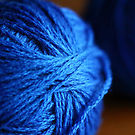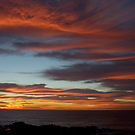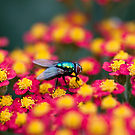
‘A honourable art gallery? Surely not? Well, yeah, that’s how it works!’ That was Haje’s reaction to RedBubble, an online art gallery and community, when it launched back in 2007. He was taken by the business model that a group of Aussie creatives had dreamed up that allowed artists a hassle- and risk-free means to put their work online and sell it. RedBubble set the base price for a print and the artist set the mark-up. When a print was sold, RedBubble took care of the billing, production, and postage whilst the mark-up went to the artist. Easy-peasy!
The world has moved on a touch since 2007, though, what with England seeming to be doing okay at cricket, so I thought that I’d catch up with the RedBubble crew, as well as some of its users, to see how things have changed since the heady days when they first hit the aether.
Speaking with Martin, RedBubble’s MD, it seems that RedBubble hasn’t changed an awful lot over the past three-and-a-bit years. Its ethos is still the same: it’s about providing artists with a community and an opportunity to sell their work, as easily as possible. The business model is still the same. RedBubble sets the base price; the artist sets the mark-up. What RedBubble has done, though, is grow.
Four months after it began, there were 30,000 images on the RedBubble site. Today, there are over 5 million, and over 2 million people visit the site every month. If you’re looking for art, you’ve a lot to choose from; if you’re selling stuff, that’s a lot of people looking at it.
But RedBubble isn’t just about selling art, though, it’s a community, too. Richard, one of the members, told me: ‘The community is fabulous. Everybody is encouraging and supportive and willing to help people learn and improve.’
At first, RedBubble only offered prints, albeit flat, mounted, or framed. Now images are available on canvas, as postcards, greetings cards, calendars, and posters. There are even stickers and some clothing options options available for designers. As Richard says, it’s an easy way to display your work and make a little bit of money on the side.
RedBubble is focused on continuing to expand its current model, as well as the development of The Bubbler blog. Martin told me that their basic viewpoint is that they stand for artists, to help people be creative and to develop. Sounds pretty good to me!
Thanks to Richard Keech for the photos. You can check out more of his work on RedBubble!







